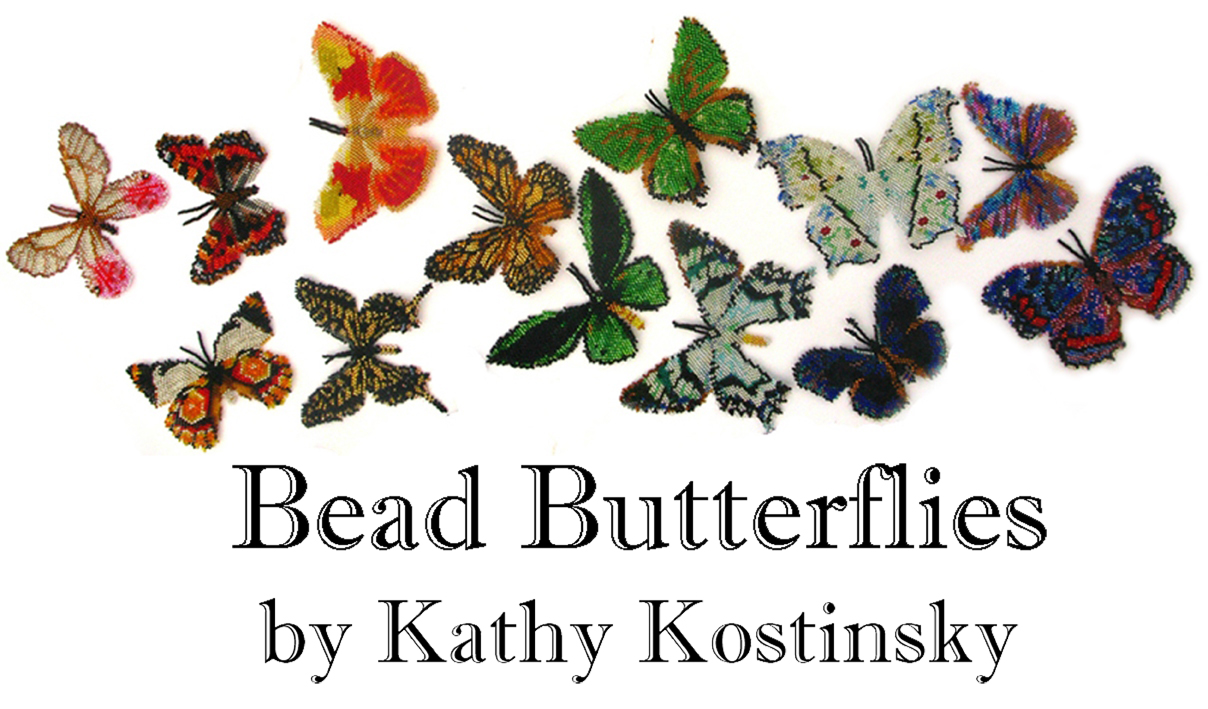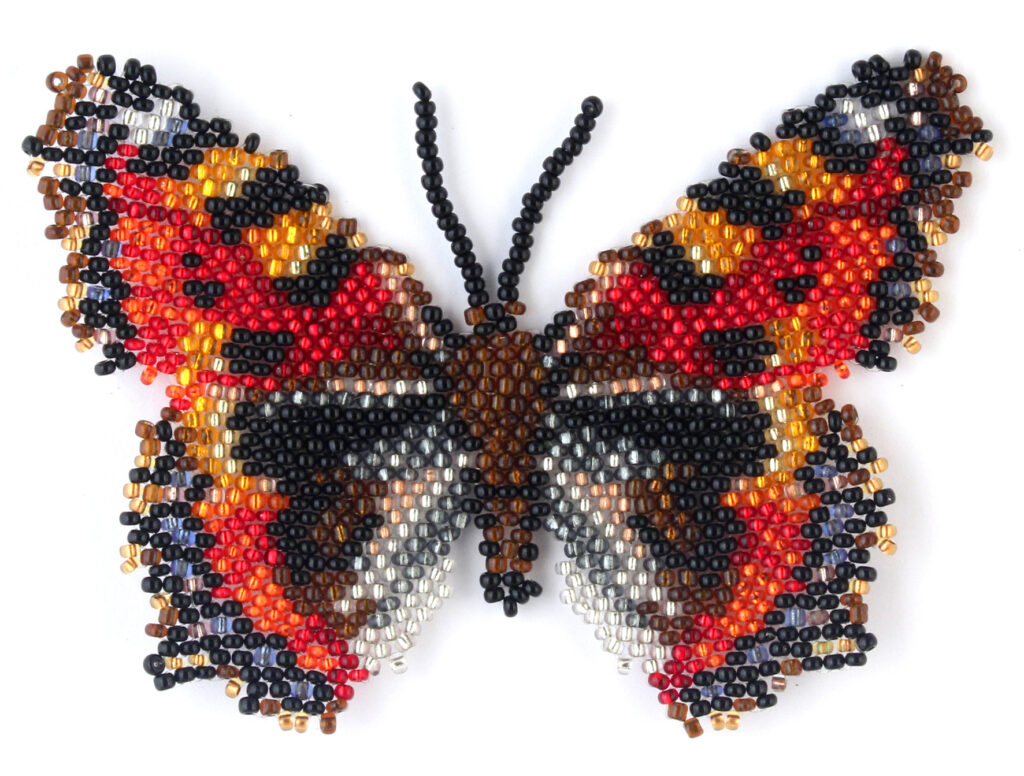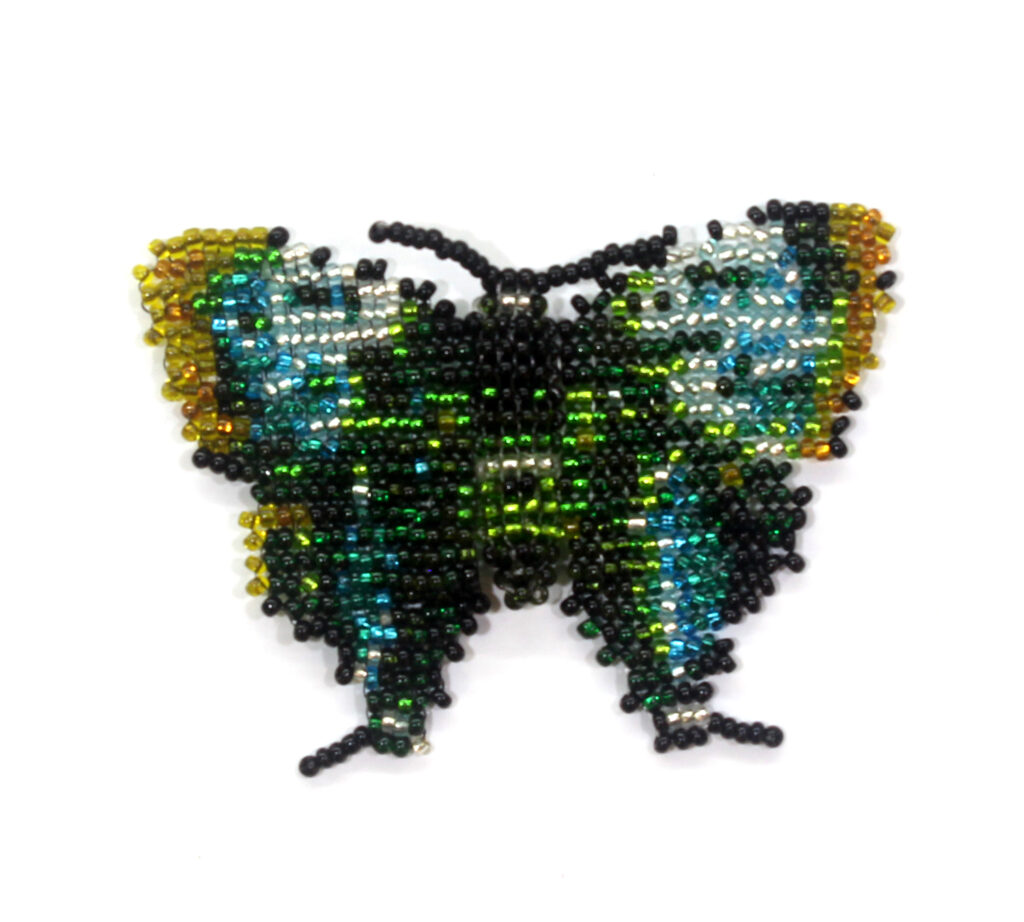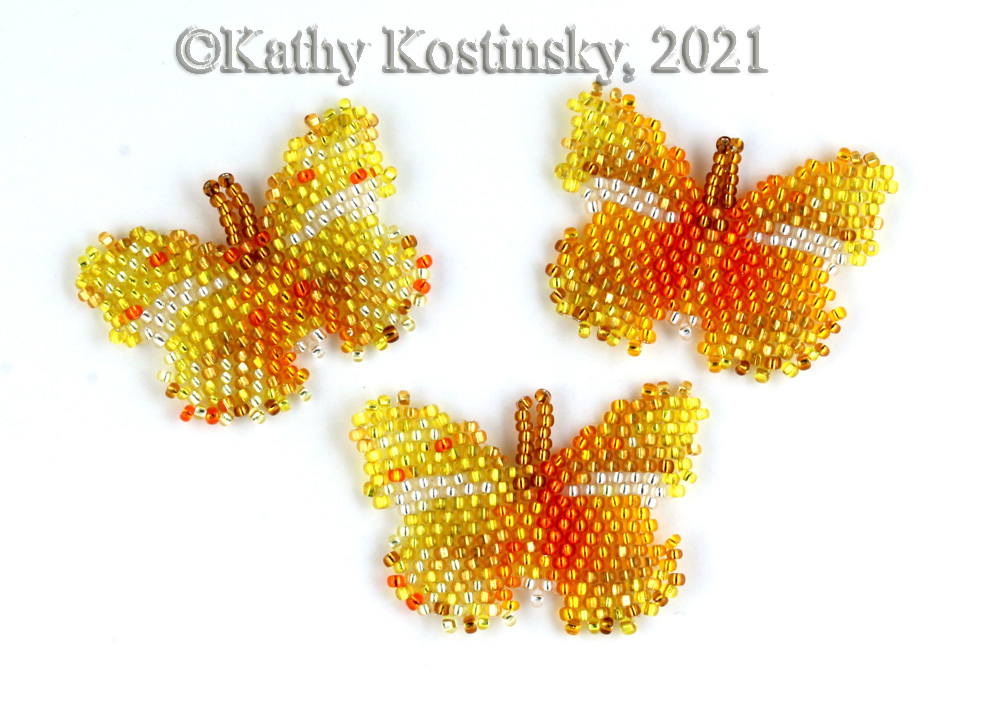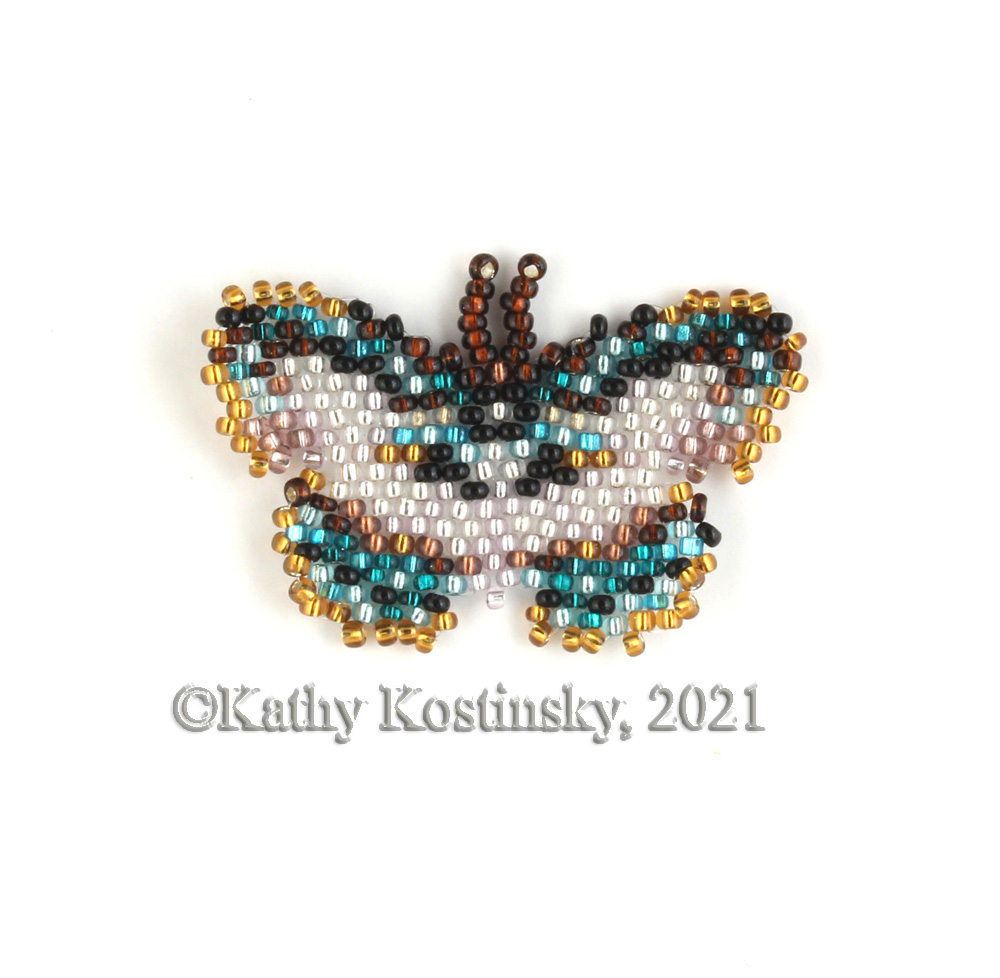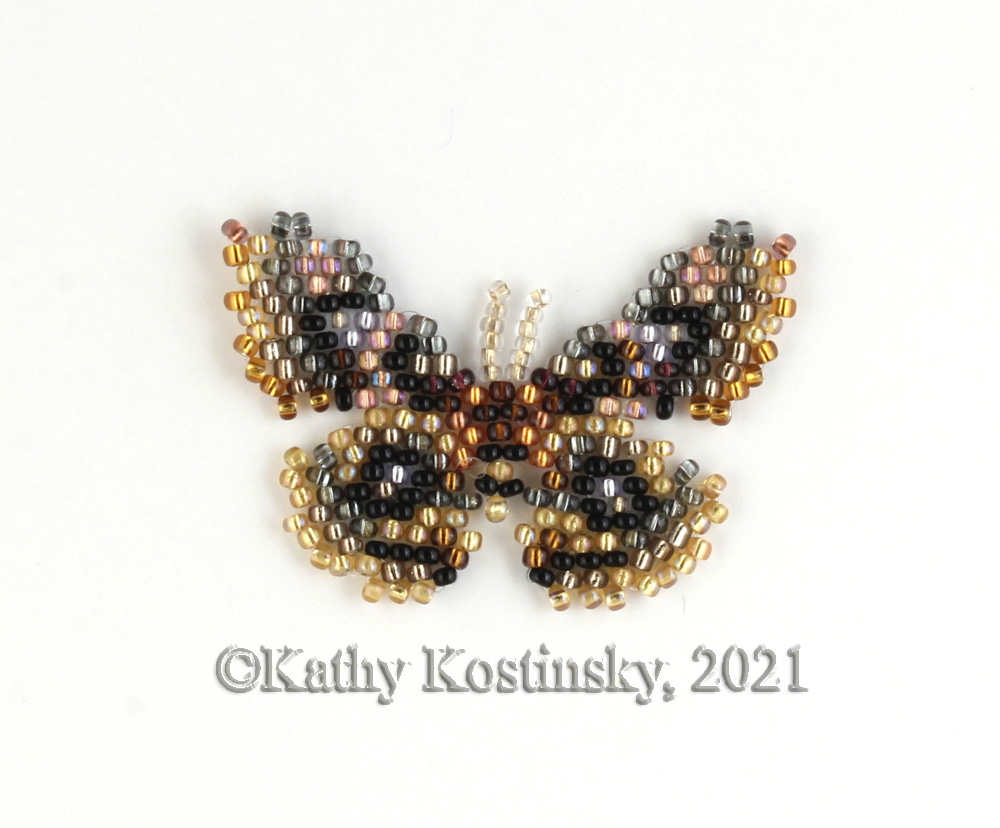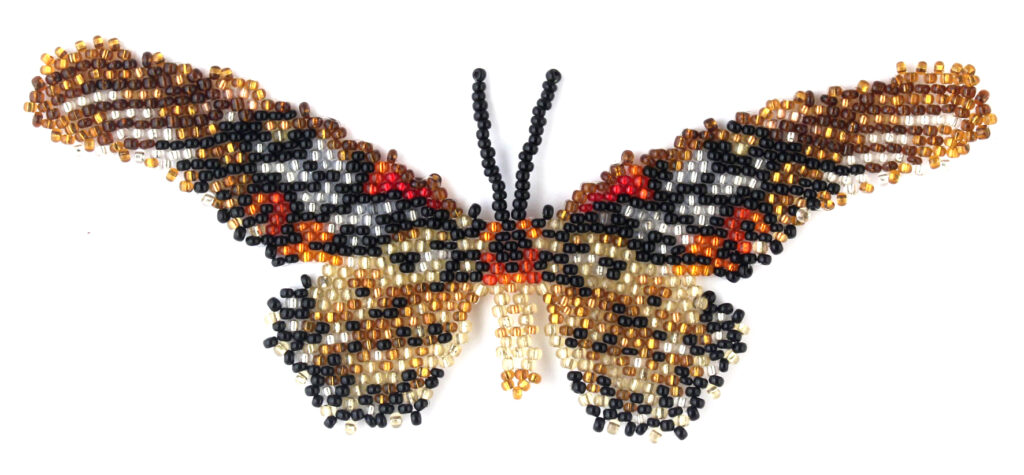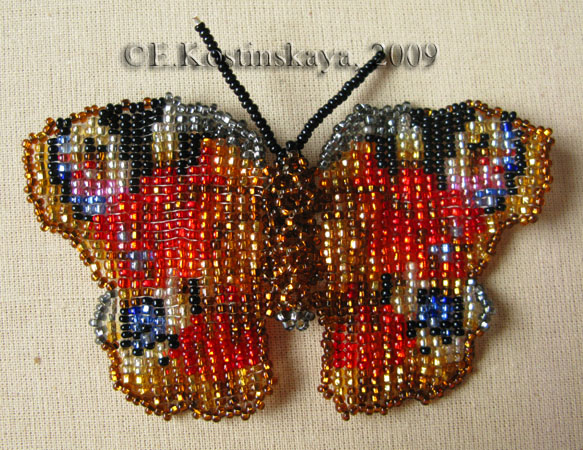
Aglais (Inachis) io (Linnaeus, 1758), or the European Peacock, more commonly known simply as the Peacock butterfly, is found in Europe, temperate Asia as far east as Japan.It is named in honour of nymph Io, the daughter of Ancient Greek river god Inachus.
The span of its wings is 5-7 cm.
This bead butterfly is loomed of 15 colours in 2009.
